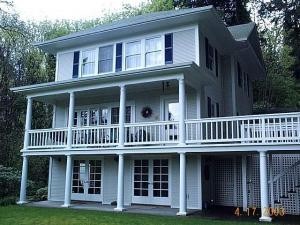
Lake Oswego has many historic properties. Touring a home that is currently for sale, a 1920’s church that has been converted to a home, the subject came up and I got curious for details. What I learned is quite different from what my perception had been.
First of all, the requirement to allow the public into your home is long gone. It simply isn’t safe to allow strangers into your home. Second, there are not a lot of tax benefits to the designation. If you own or are buying a home with historic designation it really is about the love of the property and the desire to preserve it.
There are several designations.

The State of Oregon runs its own historic registry that is pretty much all of the Oregon properties that are on the National Historic Registry. The state does offer a tax incentive, but it is tied into the preservation of the property. Essentially you have to propose and get approved a plan that would take 10% of the current market value of the property and apply that same amount of money over the course of 10 years to do substantial rehabilitation projects on the property. Preference is given to projects that improve and maintain the exterior. When finished, you must place an approved plaque on the exterior. In return for doing this, your property taxes are frozen for the same 10 years. For more information about this program, click here.
The last historic designation is local. Lake Oswego has its own historic designation list. There are currently 72 properties on this list. The owners of these properties must retain the character of the exterior, but they can remodel the interior. Any exterior alterations must be consistent with the buildings historic character, and any changes made are subject to review and approval of the Development Review Commission. The City has also, in the past, made available grants of up to $2000 for restoration and preservation of these properties. For the list of Lake Oswego properties, click here.

The bottom line is that I really value and appreciate the efforts at all levels, local to National, that encourages the preservation of historic properties. Perhaps you do as well.
Dianne
